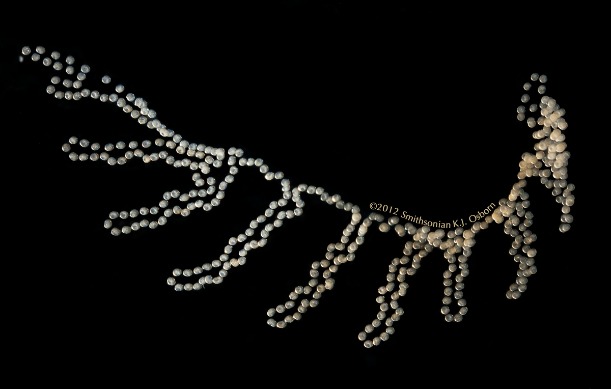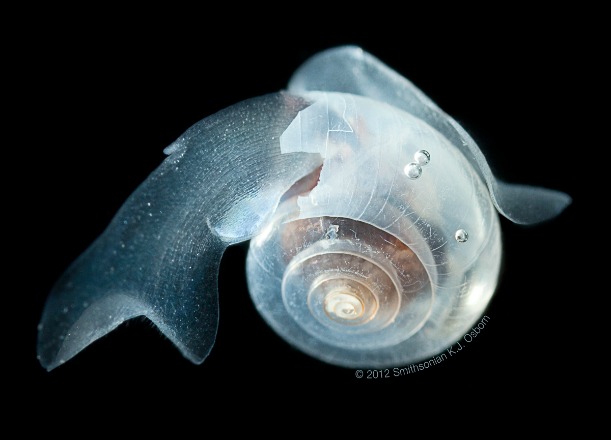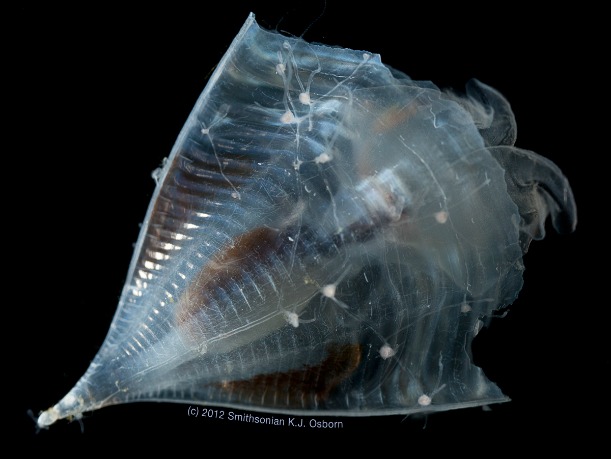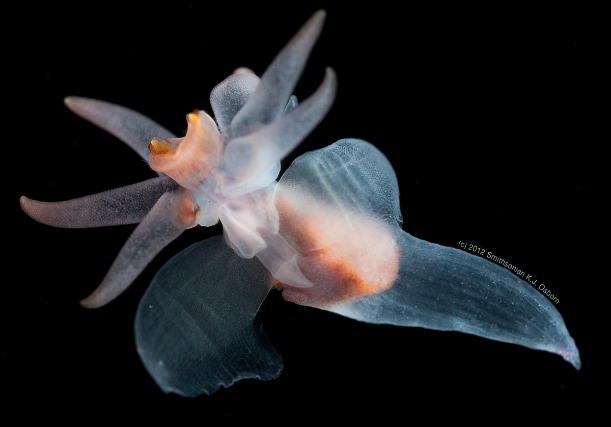



Mike Kelton and a live band serenade random women on the streets of New York City in “Wooing Women in Public” by experimental music video group cdza.
"Ohh, that's... that's not very nice... that's... why?"
Submitted by: Unknown
The diversity of fleshy plants that we call succulents is immensely vast. From your nearest nursery to the Cholla Cactus Garden in Joshua Tree National Park, the world’s collection of these plants provides us plenty of locations to shoot them.
Explore, and share, more photos like these: Stunning Succulents gallery | Cactus group | Succulents! group
Photos from circleyq, Mivr, Mind_space, ljosmyndarar, and jac hendrix, kretyen, *Lynne, juan_y_ana, photosuze, I Luv Cameras, and Gabriela Slegrova.
A website that accepts payment in exchange for knocking other sites offline is perfectly legal, the proprietor of the DDoS-for-hire service says. Oh, it also contains a backdoor that's actively monitored by the FBI.
Ragebooter.net is one of several sites that openly accepts requests to flood sites with huge amounts of junk traffic, KrebsonSecurity reporter Brian Krebs said in a recent profile of the service. The site, which accepts payment by PayPal, uses so-called DNS reflection attacks to amplify the torrents of junk traffic. The technique requires the attacker to spoof the IP address of lookup requests and bounce them off open domain name system servers. This can generate data floods directed at a target that are 50 times bigger than the original request.
Krebs did some sleuthing and discovered the site was operated by Justin Poland of Memphis, Tennessee. The reporter eventually got an interview and found Poland was unapologetic.










George Takei responds to “traditional” marriage fans.
George Takei is flawfree.
Hahahaha

Scotch Tasting Lineup #scotch #alcohol #tasting #manklub #losangeles #california #booze #lagavulin #balvenie #springbank #oban #macallan #auchentoshan #glenmorangie #talisker #amrut #whisky

Many tunnels in Sydney, Australia aren't tall enough to permit tractor trailers to move through safely. This animated gif shows a warning system that informs truck drivers when they're about to crash into a tunnel entrance. When sensors detect a vehicle that is too tall, the system pours water across the entrance to the tunnel and projects a stop sign onto that water curtain.
Cooper GriggsWOOOOWWWWW!!!!!!!

Working in the Belly of the Beast.

Picture This! The Real Cost of Prison Expansion in front of a foreclosed home in West Philly.
Governor Corbett’s proposed budget for 2012-2013 will eliminate funding for Pennsylvania’s Homeowners Emergency Mortgage Assistance Program (HEMAP). For the past 28 years, the program has provided loans to homeowners who have fallen behind on their mortgage due to a job loss or other temporary hardship and are in danger of losing their home. Governor Corbett already slashed the program’s budget to $2 million last year - such a drastic cut that the program announced it would not be able to continue operating. According to the Pennsylvania Housing Finance Agency, HEMAP has saved the homes of more than 46,000 Pennsylvanians from foreclosure.
At the same time as Governor Corbett is taking away a critical safety net that helps keep Pennsylvanians in their homes, he is spending $685 million to build three new prisons and expand nine existing facilities. Instead of helping Pennsylvania residents maintain safe, stable homes for their families that will allow them to grow and succeed, Governor Corbett is choosing to invest in more unnecessary prison cells. Tell Governor Corbett and the PA legislature that we want homes, not prisons!
For more on HEMAP’s years of success in helping people stay in their homes, see: http://online.wsj.com/article/SB10001424052748704561004575013263982822140.html
For more on Decarcerate PA’s demand for a moratorium on prison construction, visit: www.decarceratepa.info

Last we heard from Burgopak, they'd sent us their packaging design for Little Printer (a.k.a. the BERG-o-pack), and it so happens that their latest project also happens to be for a product that we'd covered before (let's just say that all parties involved have impeccable taste).

Lapka is a set of "artisan electronic devices" for gathering data about one's immediate surroundings: each of the four building-block-like sensors can be attached to one's iPhone through the standard headphone jack. Coupled with a free app, they can provide detailed information on radiation, organic matter, electromagnetic fields and humidity—interesting features in themselves, enhanced by the product's quasi-organic, vaguely totemic form factor.

To complement Lapka's effort to make the product look more like jewelry or tabletop sculptures than gadgets, Burgopak notes that "The products themselves are luxury tools that convey their connection with nature. The packaging, we felt, should do the same."
From the beginning this was not intended to feel like an, 'Apple' product. It is intended to disrupt preconceived expectations about consumer electronics. Brown kraft board, single colour print and incredibly limited product information were all intentional features.
The devil, as they say, is in the detail; using precise harmonious proportions (derived from the product) Burgopak created a simple tray to protect and frame the product. This was wrapped in a sleeve with an integrated lock and finished with a single tamper evident seal.

Cooper GriggsHome run!

Color me impressed! I figured the next generation of designer-relevant input devices would come from Apple or Wacom, but surprise—it's Adobe. The software giant is venturing into hardware, and their resultant Project Mighty looks pretty damn wicked so far.
The Adobe Mighty Pen is designed for sketching on tablets, and it's got at least two brilliant features integrated with their drawing app: Since the screen can distinguish between the pen's nib and your mitts, you can draw with the pen, then erase with your finger. No more having to click a submenu to change the tool. And when you do need a submenu, you click a button on the pen itself to make it appear on-screen.
The truly awesome device, however, is the pen's Napoleon Ruler. Adobe's VP of Product Experience Michael Gough was trained as an architect, and wanted to bring the efficacy of sketching with a secondary guiding tool--like we all once did with our assortment of plastic triangles, French curves and the like--to the tablet experience. What the Napoleon does is so simple and brilliant, you've just got to see it for yourself:
Presumably they're still working out the kinks, as the release date is TBD.
(more...)Cooper GriggsThick with it

|
|
thanks for tumblr, a platform i have grown to love over the 6 years that i’ve been here.
i understand this is your project and i’ll understand if you sell it. but i wanted to point out, you left money on the table when it came to me.
i’d have paid a small fee to have a “no-ads” dashboard. you could have added all the ads you wanted ($$) and i’d have given you money ($$) to have them not show up for me. money in your pocket both ways.
i also would have paid a small fee for premium features ($$). all that time wasted on trying to get me to not use ‘missing e’ could have been put to better use asking me to pay a small fee ($$) for a better user experience within tumblr itself.
there are several other ways you missed making some solid dough on a tumblr fan such as myself, but i think the point is made.
you left money on the table with me. i hope you don’t do that with yahoo, or whomever you may sell to.
tumblr is a neat place. you did something really great in creating this software. however, we did something great in being the community that used it. you made tumblr worth something, and we’ve made it worth more.
good luck and thanks again.
respectfully,
notentirely
Cooper GriggsAll I wanted was a Pepsi
Cooper GriggsJackie Treehorn's pad.

Would rather be listening to the new Daft Punk album here, instead of on headphones at work…
![]()

The shelled sea butterfly Hyalocylis striata can be found in the warm surface waters of the ocean around the world. Photo: © Karen Osborn
The chemistry of the ocean is changing. Most climate change discussion focuses on the warmth of the air, but around one-quarter of the carbon dioxide we release into the atmosphere dissolves into the ocean. Dissolved carbon dioxide makes seawater more acidic—a process called ocean acidification—and its effects have already been observed: the shells of sea butterflies, also known as pteropods, have begun dissolving in the Antarctic.
Tiny sea butterflies are related to snails, but use their muscular foot to swim in the water instead of creep along a surface. Many species have thin, hard shells made of calcium carbonate that are especially sensitive to changes in the ocean’s acidity. Their sensitivity and cosmopolitan nature make them an alluring study group for scientists who want to better understand how acidification will affect ocean organisms. But some pteropod species are proving to do just fine in more acidic water, while others have shells that dissolve quickly. So why do some species perish while others thrive?
It’s a hard question to answer when scientists can hardly tell pteropod species apart in the first place. The cone-shaped pteropod shown here is in a group of shelled sea butterflies called thecosomes, from the Greek for “encased body.” There are two other groups: the pseudothecosomes have gelatinous shells, and the gymnosomes (“naked body”) have none at all. Within these groups it can be hard to tell who’s who, especially when relying on looks alone. Scientists at the Smithsonian’s National Museum of Natural History are using genetics to uncover the differences among the species.
This effort is led by zoologist Karen Osborn, who has a real knack for photography: in college, she struggled over whether to major in art or science. After collecting living animals while SCUBA diving in the open ocean, she brings them back to the research ship and photographs each in a shallow tank of clear water with a Canon 5D camera with a 65mm lens, using three to four flashes to capture the colors of the mostly-transparent critters. The photographs have scientific use—to capture never-before-recorded images of the living animals—and to “inspire interest in these weird, wild animals,” she said. All of these photos were taken in the Pacific Ocean off the coasts of Mexico and California.

This gymnosome (Pneumodermopsis sp.) pulls shelled pteropods from their shells with a set of suckers. Photo: © Karen Osborn
Although sea butterflies in the gymnosome group, like the one seen above, don’t have shells and are therefore not susceptible to the dangers of ocean acidification, their entire diet consists of shelled pteropods. If atmospheric CO2 continues to rise due to the burning of fossil fuels and, in turn, the ocean becomes more acidic, their prey source may disappear—indirectly endangering these stunning predators and all the fish, squid and other animals that feed on the gymnosomes.

Cavolinia uncinata. Photo: © Karen Osborn
For years, sea butterflies were only collected by net. When collected this way, the animals (such as Cavolinia uncinata above) retract their fleshy “wings” and bodies into pencil eraser-sized shells, which often break in the process. Researchers then drop the collected pteropods into small jars of alcohol for preservation, which causes the soft parts to shrivel—leaving behind just the shell. Scientists try to sort the sea butterflies into species by comparing the shells alone, but without being able to see the whole animals, they may miss the full diversity of pteropods.

This may be the same species as the previous sea butterfly (Cavolinia uncinata), or it could be a different species that has gone unnoticed for decades. Photo: © Karen Osborn
More recently, scientists such as Osborn and Smithsonian researcher Stephanie Bush have begun collecting specimens by hand while SCUBA diving in the open sea. This blue-water diving allows her to collect and photograph fragile organisms. As she and her colleagues observe living organisms in more detail, they are realizing that animals they had thought were the same species, in fact, may not be! This shelled pteropod (Cavolinia uncinata) is considered the same species as the one in the previous photo. Because their fleshy parts look so different, however, Bush is analyzing each specimen’s genetic code to establish whether they really are the same species.

Mass of Cavolinia uncinata eggs. Photo: © Karen Osborn
This string of eggs shot out of Cavolinia uncinata when it was being observed under the microscope. The eggs are attached to one another in a gelatinous mass, and, had they not been self-contained in a petri dish, would have floated through the water until the new pteropods emerged as larvae. Their reproduction methods aren’t well studied, but we know that pteropods start off as males and once they reach a certain size switch over to females. This sexual system, known as sequential hermaphroditism, may boost reproduction because bigger females can produce more eggs.

In the Arctic, this pteropod species (Limacina helicina) can compose half of the zooplankton swimming in the water column. Photo: © Karen Osborn
This pteropod (Limacina helicina) has taken a beating from being pulled through a trawl net: you can see the broken edges of its shell. An abundant species with black flesh, each of these sea butterflies are the size of a large grain of sand. In certain conditions they “bloom” and, when fish eat too many, the pteropod’s black coloring stains the fishes’ guts black.

The shell of Clio recurva is a perfect landing strip for a colony of hydroids. Photo: © Karen Osborn
Not only is the inside of this shell home to a pteropod (Clio recurva), but the outside houses a colony of hydroids—the small pink flower-like animals connected by transparent tubing all over the shell. Hydroids, small, predatory animals related to jellyfish, need to attach to a surface in the middle of the ocean to build their colony, and the tiny shell of Clio is the perfect landing site. While it’s a nice habitat for the hydroids, this shell probably provides less than ideal protection for the pteropod: the opening is so large that a well equipped predator, such as larger shell-less pteropods, can likely just reach in and pull it out. “I would want a better house, personally,“ says Osborn.

It was once thought that Clione limacina was found in the Antarctic and Arctic, but it’s likely that they are two separate species. Photo: © Karen Osborn
Gymnosomes are pteropods that lack shells and have a diet almost entirely composed of shelled pteropods. This species (Clione limacina), exclusively feeds on Limacina helicina (the black-fleshed pteropod a few slides back). They grab their shelled relative with six tentacle-like arms, and then use grasping jaws to suck their meal out of the shell.
 This post was written by Emily Frost and Hannah Waters. Learn more about the ocean from the Smithsonian’s Ocean Portal.
This post was written by Emily Frost and Hannah Waters. Learn more about the ocean from the Smithsonian’s Ocean Portal.
